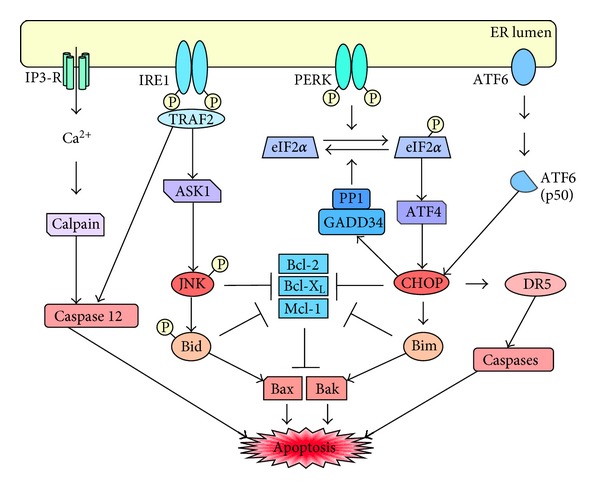Figure 3.

Cell death signaling by the ER stress response/UPR. In case of severe and sustained ER stress, a number of proapoptotic events begin to dominate and lead to apoptosis. Transcription factors ATF4 and ATF6-p50 stimulate CHOP expression. On one hand, CHOP stimulates expression of GADD34, which associates with PP1, resulting in dephosphorylation of eIF2α, thus reactivating global cellular protein synthesis. On the other hand, CHOP inhibits antiapoptotic proteins of the Bcl-2 family and stimulates pro-apoptotic Bim, altogether leading to heterodimerization and activation of pro-apoptotic Bax and Bak. CHOP also stimulates expression of cell surface death receptor DR5, which sensitizes cells to pro-apoptotic stimuli, presumably via calibrating the extrinsic apoptotic pathway involving caspase 12. Similarly, activated JNK complements the pro-apoptotic efforts of CHOP. JNK becomes phosphorylated and activated by protein kinase ASK1 upon association of TRAF2 with activated IRE1. Association of TRAF2 with activated IRE1 also leads to activation of caspase 12. Calcium release from the ER via IP3 receptors can activate calpains, which further stimulate caspase 12 activation via proteolytic cleavage of its inactive procaspase precursor.
